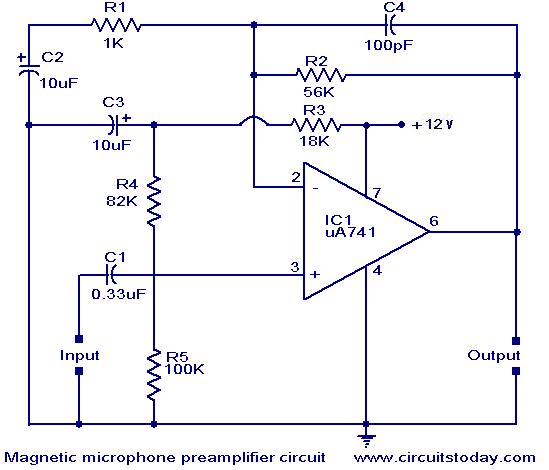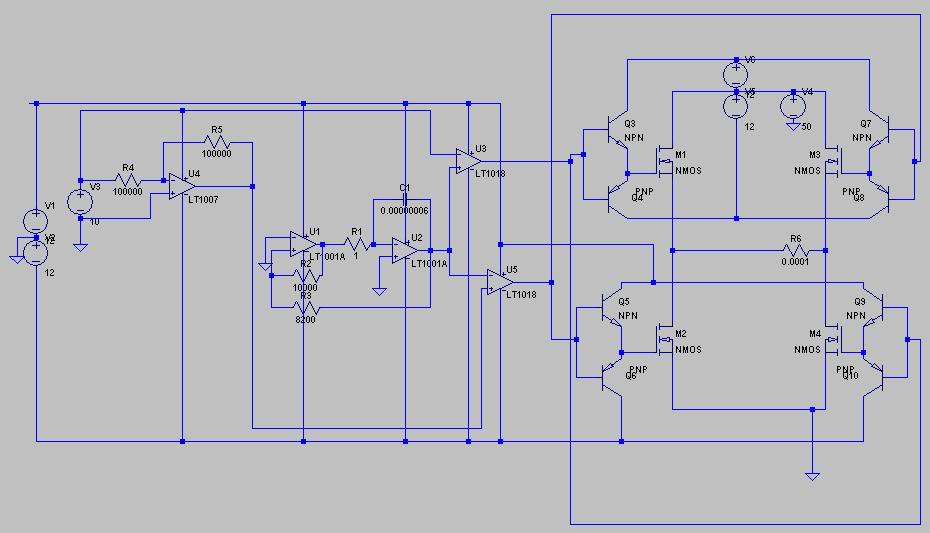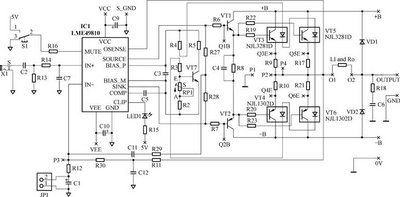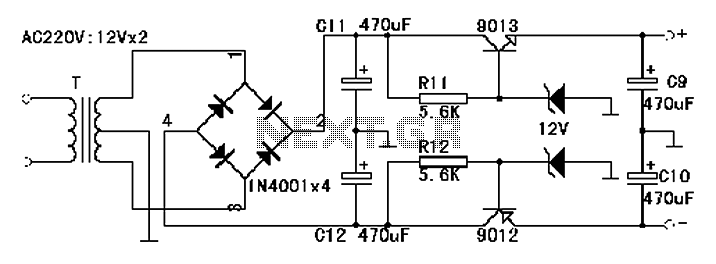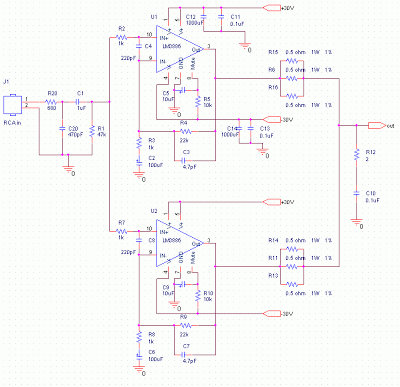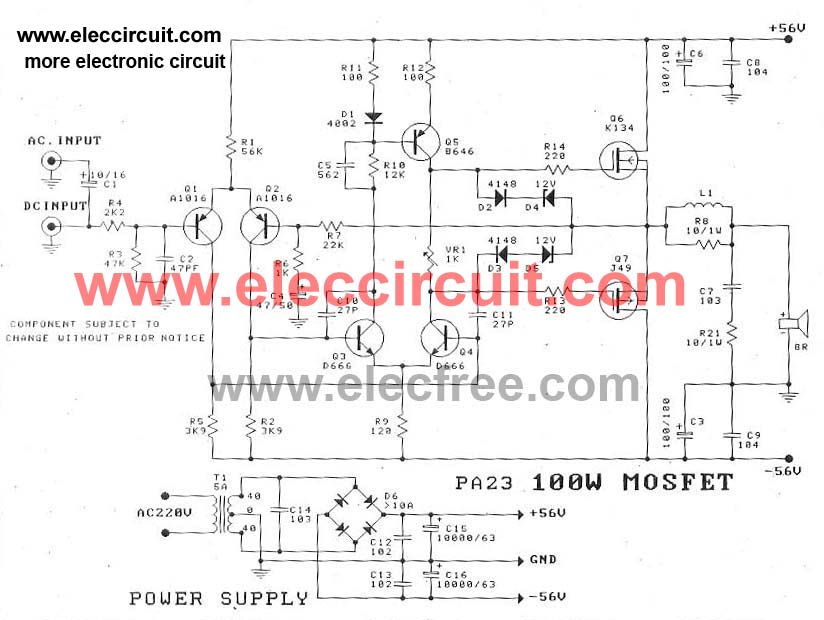
Loudspeaking radio receiver with a bridge amplifier powered by free energy

During experiments with various receivers and amplifiers powered by "free energy," it was discovered that connecting the audio amplifier to the receiver using only two wires for audio signals and supply voltage is more convenient. This setup allows the radio receiver to operate without switches, simply connecting headphones to the receiver's output. The schematic diagram of the receiver is illustrated in Figure 1. The circuit is entirely symmetric from the detector bridge, with the detector linked to the amplifier through two terminals (A and B), while the amplifier's output connects to the loudspeaker through two additional terminals (C and D). The resonant circuit of the receiver consists of the antenna capacitance and the inductance of coil L1, optimizing signal power in the resonant tank circuit. A switch (SA1) and a neon lamp (HL1) provide protection for the receiver during thunderstorms. The antenna does not accumulate static charge, as it is grounded through coil L1. A bridge detector circuit (VD1 - VD4) effectively handles inductive loads. The detector connects to the antenna via capacitor C1, which matches the impedances. After adjustment for maximum voltage across the amplifier, capacitor C1 can be replaced with a fixed capacitor of the appropriate value, typically around 47 pF for the LW band. The detector's output voltage is symmetric concerning ground, and the voltage travels from the detector to the audio amplifier input through wires A and B. At the amplifier input, the voltage separates into AC and DC components. The AC component is fed through coupling capacitors C3 and C4 to the transistor bases of the bridge amplifier, while the DC component charges capacitor C6 through low-frequency chokes, serving as the power supply. The receiver operates without a common wire, and the amplifier arms balance automatically since the bases of the complementary transistors are interconnected. However, the transistors do not have bias, functioning in Class "C," which results in crossover distortion of the signal waveform, as depicted in Figure 2(A). The graph illustrates the output current in one arm of the amplifier (e.g., VT1, VT2) in relation to the input voltage, revealing distorted output current for sinusoidal input voltage. These distortions are particularly noticeable with silicon transistors, which have a higher junction drop voltage of approximately 0.5 V. Germanium transistors, with a lower junction drop voltage of about 0.15 V, are preferred for the audio amplifier. Crossover distortion occurs when the voltage crosses the zero point, creating an unpleasant auditory experience. This distortion can be mitigated by introducing a slight forward bias (Ubias), as shown in Fig. 2(B). While the distortions disappear, an initial current (i0) emerges, reducing amplifier efficiency. An alternative method involves mixing the audio signal with a high-frequency signal, as illustrated in Fig. 2(C). This technique is employed in tape recorders with AC bias, as the magnetization curve is similar to the amplifier's transfer characteristic in a push-pull stage without bias. By adjusting the amplitude of the high-frequency bias, the desired quiescent current can be set, ensuring it is not excessively high but sufficient to eliminate distortion. Additionally, the detected RF voltage ripple from the bridge detector circuit has a frequency twice that of the carrier signal. Adjusting the value of the smoothing capacitor (C2) in Fig. 1 is necessary to achieve the desired quiescent current, preferably when no audio transmission is present.
The schematic design described integrates a bridge detector circuit and a resonant tank, highlighting a compact and efficient configuration for audio amplification. The use of two wires for signal and power transmission simplifies the setup, enhancing usability in various applications. The automatic balancing of the amplifier arms is a notable feature, ensuring consistent performance without the need for a common wire. The choice of germanium transistors over silicon is critical due to their lower junction drop voltage, which minimizes crossover distortion in audio applications. The incorporation of a forward bias and high-frequency signal mixing techniques illustrates advanced methods for improving audio fidelity and amplifier efficiency. The design is particularly beneficial for low-power applications where simplicity and effectiveness are paramount. Overall, this circuit exemplifies innovative approaches to audio amplification, leveraging both traditional and modern techniques to enhance performance.While experimenting with different receivers and amplifiers powered by "free energy", it was found that it is more convenient to connect the audio amplifier to the receiver by using only two wires for audio signals and supply voltage. This would allow to use the radio receiver with no switches, just connecting headphones to the output of the recei
ver. The schematic diagram of the receiver is shown in Figure 1. From the detector bridge the circuit is completely symmetric, the detector is connected to the amplifier by two wires (the terminals A and B) and the output of the amplifier is connected to the loudspeaker (the terminals C and D) by two wires. The resonant circuit of the receiver comprised the antenna capacitance and inductance of the coil L1.
This solution provides a maximum power of the signal in the resonant tank circuit. The switch SA1 and the neon lamp HL1 are used to protect the receiver during thunderstorms. The static charge doesn`t build up in the antenna because the antenna connected to the ground through the coil L1. A bridge detector circuit (VD1 - VD4) is used in this receiver, it works very well for the inductive load.
The detector connected to the antenna through the capacitor C1, this capacitor is matching impedances between them. Once adjusted for maximum voltage across the amplifier, the capacitor C1 may be replaced with a constant capacitor with proper value.
The optimal capacitance of the capacitor C1 is about 47 pF for LW band. The output voltage of the detector is symmetric with respect to ground. Through the wires A and B the voltage passes from the detector to the input of the audio amplifier. At the input of the amplifier the voltage decomposes into AC and DC parts. The AC part feeds through the coupling capacitors C3 and C4 to the transistor bases of the bridge amplifier. The DC part charges through the low-frequency chokes the capacitor C6. The DC part is used for power supply. The receiver doesn`t have a common wire. The arms of the amplifier balances automatically, because the bases of the complementary transistors are connected together.
But transistors in this type of amplifiers don`t have a bias, they does not work in the class "B" but rather in the class "C". This leads to crossover distortion of the signal waveform, as shown in Figure 2(A). The graph shows the dependence of the output current in one arm of the amplifier (for example, VT1, VT2) on the input voltage.
We see a distorted output current for a sinusoidal input voltage. These distortions are especially noticeable with silicon transistors that have higher junction drop voltage of about 0. 5 V. Germanium transistors has lower junction drop voltage of about 0. 15 V, so they are used in the audio amplifier. Crossover distortion is related to the moments when voltage crosses zero point, that is very unpleasant to the ear.
Crossover distortions can be reduced by using a slight forward bias Ubias, as shown in Fig. 2(B). The distortions disappear but some initial current i0 appears, it makes the amplifier less efficient. The same result can be obtained by other means. If mixing the audio signal with a high frequency signal, as shown in Fig. 2(C). This method is used in tape recorders with AC bias, because the magnetization curve of the type is very similar to the amplifier transfer characteristic of a push-pull stage without bias.
By adjusting the amplitude of the "high frequency bias" the desired initial current (quiescent current) can be set, this current should not be too high, but sufficient to eliminate the distortion. But we already have high frequency bias, we got the detected RF voltage ripple. In the bridge detector circuit the ripple has twice the frequency of the carrier signal. We just need to tweak the value of the smoothing capacitor C2 (Fig. 1) to obtain the desired quiescent current. It`s better tweak the capacitor C2 when there is no audio transmission (bu 🔗 External reference
The schematic design described integrates a bridge detector circuit and a resonant tank, highlighting a compact and efficient configuration for audio amplification. The use of two wires for signal and power transmission simplifies the setup, enhancing usability in various applications. The automatic balancing of the amplifier arms is a notable feature, ensuring consistent performance without the need for a common wire. The choice of germanium transistors over silicon is critical due to their lower junction drop voltage, which minimizes crossover distortion in audio applications. The incorporation of a forward bias and high-frequency signal mixing techniques illustrates advanced methods for improving audio fidelity and amplifier efficiency. The design is particularly beneficial for low-power applications where simplicity and effectiveness are paramount. Overall, this circuit exemplifies innovative approaches to audio amplification, leveraging both traditional and modern techniques to enhance performance.While experimenting with different receivers and amplifiers powered by "free energy", it was found that it is more convenient to connect the audio amplifier to the receiver by using only two wires for audio signals and supply voltage. This would allow to use the radio receiver with no switches, just connecting headphones to the output of the recei
ver. The schematic diagram of the receiver is shown in Figure 1. From the detector bridge the circuit is completely symmetric, the detector is connected to the amplifier by two wires (the terminals A and B) and the output of the amplifier is connected to the loudspeaker (the terminals C and D) by two wires. The resonant circuit of the receiver comprised the antenna capacitance and inductance of the coil L1.
This solution provides a maximum power of the signal in the resonant tank circuit. The switch SA1 and the neon lamp HL1 are used to protect the receiver during thunderstorms. The static charge doesn`t build up in the antenna because the antenna connected to the ground through the coil L1. A bridge detector circuit (VD1 - VD4) is used in this receiver, it works very well for the inductive load.
The detector connected to the antenna through the capacitor C1, this capacitor is matching impedances between them. Once adjusted for maximum voltage across the amplifier, the capacitor C1 may be replaced with a constant capacitor with proper value.
The optimal capacitance of the capacitor C1 is about 47 pF for LW band. The output voltage of the detector is symmetric with respect to ground. Through the wires A and B the voltage passes from the detector to the input of the audio amplifier. At the input of the amplifier the voltage decomposes into AC and DC parts. The AC part feeds through the coupling capacitors C3 and C4 to the transistor bases of the bridge amplifier. The DC part charges through the low-frequency chokes the capacitor C6. The DC part is used for power supply. The receiver doesn`t have a common wire. The arms of the amplifier balances automatically, because the bases of the complementary transistors are connected together.
But transistors in this type of amplifiers don`t have a bias, they does not work in the class "B" but rather in the class "C". This leads to crossover distortion of the signal waveform, as shown in Figure 2(A). The graph shows the dependence of the output current in one arm of the amplifier (for example, VT1, VT2) on the input voltage.
We see a distorted output current for a sinusoidal input voltage. These distortions are especially noticeable with silicon transistors that have higher junction drop voltage of about 0. 5 V. Germanium transistors has lower junction drop voltage of about 0. 15 V, so they are used in the audio amplifier. Crossover distortion is related to the moments when voltage crosses zero point, that is very unpleasant to the ear.
Crossover distortions can be reduced by using a slight forward bias Ubias, as shown in Fig. 2(B). The distortions disappear but some initial current i0 appears, it makes the amplifier less efficient. The same result can be obtained by other means. If mixing the audio signal with a high frequency signal, as shown in Fig. 2(C). This method is used in tape recorders with AC bias, because the magnetization curve of the type is very similar to the amplifier transfer characteristic of a push-pull stage without bias.
By adjusting the amplitude of the "high frequency bias" the desired initial current (quiescent current) can be set, this current should not be too high, but sufficient to eliminate the distortion. But we already have high frequency bias, we got the detected RF voltage ripple. In the bridge detector circuit the ripple has twice the frequency of the carrier signal. We just need to tweak the value of the smoothing capacitor C2 (Fig. 1) to obtain the desired quiescent current. It`s better tweak the capacitor C2 when there is no audio transmission (bu 🔗 External reference
Warning: include(partials/cookie-banner.php): Failed to open stream: Permission denied in /var/www/html/nextgr/view-circuit.php on line 713
Warning: include(): Failed opening 'partials/cookie-banner.php' for inclusion (include_path='.:/usr/share/php') in /var/www/html/nextgr/view-circuit.php on line 713
